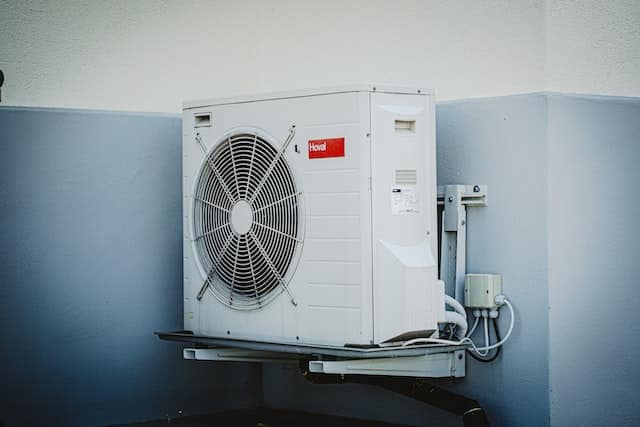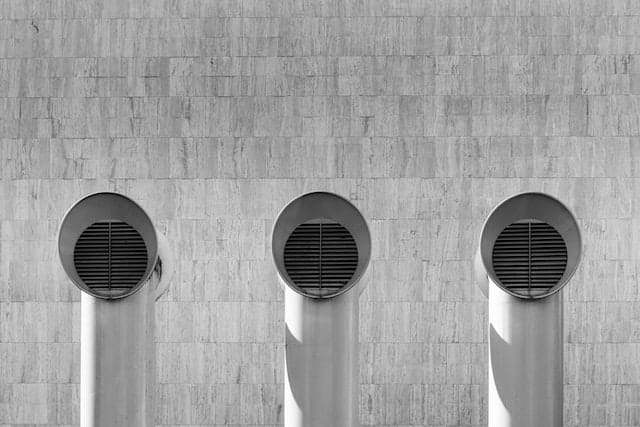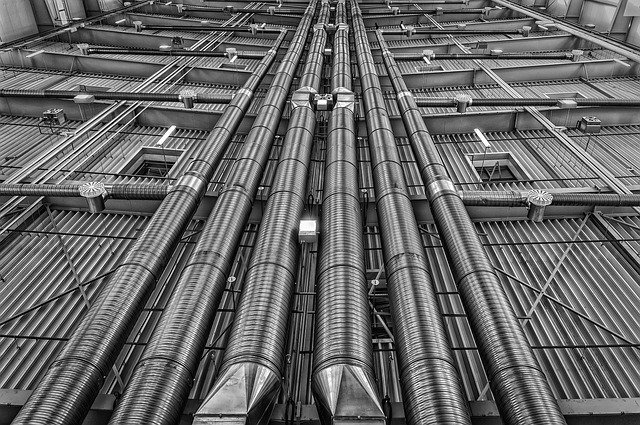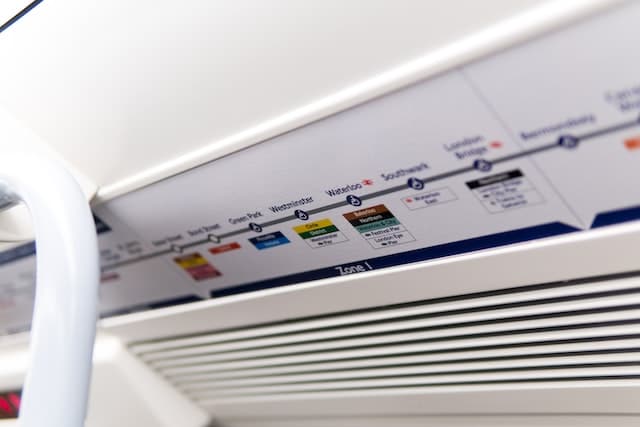Air ducts are connected to your heating and cooling system. They transport air throughout your house and can collect dust, pet dander, and other contaminants. Cleaning them regularly can help extend the life of your HVAC system and keep your home safe.
Air ducts are the pipes that circulate air throughout your home. If you have a problem with your ducts, it can lead to uneven room temperatures, excess dust, and even high electricity bills. In fact, up to 30% of the air inside your ducts may be escaping. If you suspect your ducts are clogged or damaged, consult us to determine the cause of the problem.
Air ducts are connected to your heating or cooling system and should be well sealed. If you can, avoid placing air ducts in rooms that are not used frequently. Moreover, it is important to seal off the return air, which could draw in odor-causing air from other parts of the house. Our HVAC technicians use a ton of air, which has nothing to do with weight

HVAC ducts are a series of interconnected tubes that transport air throughout a home. The ducts are held together with a material called mastic or metal tape. The sealant wears out over time and can become loose. Sometimes rodents will chew the seals or tear off segments, so it’s necessary to get a technician to inspect and repair the leaks. The ductwork also tends to collect dust, which can affect the efficiency of the heating and cooling systems. We have started adopting green technologies for indoor air quality, energy efficiency, and protecting the environment. This trend is reflected in the ductwork industry, as well. There are both green and traditional ductwork options available.
Air quality in our homes is often poor due to dirt in the HVAC ducts. These ducts collect dust and pet dander, which can clog the air ducts and affect our health. Mold growth is another common problem with dirty ducts.
Allergies are another common cause of poor air quality. Allergies can be caused by dust and pollen, and unclean HVAC ducts can spread these allergens throughout your home. Open windows and doors can also let pollen into your home.

Regular maintenance will also reduce motor wear, thereby extending the life of your HVAC system. Performing regular air duct cleanings will also reduce the cost of replacing your HVAC system.
HVAC duct cleaning is one of the most affordable ways to improve the quality of air in your home. You can also invest in upgraded air filtration systems, which will extend the life of your system.
Regular maintenance of your HVAC system will prevent your HVAC system from breaking down. Your system is an expensive piece of equipment, and you need to protect it by performing maintenance regularly.
If you are not comfortable with cleaning the air ducts in your home, you can hire our expert services to do the job. A skilled technician will conduct a thorough visual inspection of your ductwork before and after the cleaning process. He would also take remote photographs and produce a report detailing his work.
Our professionals are be trained to perform duct cleaning according to NADCA standards. This is done in order to protect people from contaminants in the air. A properly cleaned system is less likely to malfunction and will last longer. In addition, it will operate more efficiently. It is a nice idea to contact an HVAC duct cleaning provider and they will handle everything without any hussle.
HVAC duct systems typically combine several types of ductwork. The trunk ducts are often metal, while the branches are more flexible. The flexible branches often have to bend around walls or joists, and may need to fit through narrow spaces. Installation of a ductwork system can be a lengthy process. The average installation takes two or three days, requiring eight to ten hours of labor per day.
Older homes can have HVAC ductwork that looks like an octopus’ arms. The branches of the ductwork wrap around the air handler. These branches can become clogged and lead to malfunctioning equipment. To avoid this, our professionals inspect the ductwork.
Choosing the right flexible duct is important to the performance of your HVAC system. If the ducts are not installed correctly, they can have adverse effects on your system’s performance. For example, the number of bends in the flexible ducts and the amount of sag in between support joints can increase resistance, which can decrease system performance. It is also important to determine the minimum length of the flexible ducts.
Flex ducts require more maintenance than conventional ducts. They can become clogged with dust, which is not good for your system’s performance. Furthermore, the ducts may be difficult to access in crawl spaces. Furthermore, it is illegal to install flex ducts inside a crawl space, as the International Residential Code prohibits the exhaust of air into the crawl space. Additionally, mice and other rodents have been known to chew on fiberglass ducts.
Metal ductwork is another option, but this is expensive and difficult to install. Moreover, it requires more precise measurements. Instead, flexible ducts are more versatile. They can be used for branching off the main plenum of your HVAC system. Generally, flexible ducts are used to transport air from various rooms in the building to individual ceiling vents. Flexible ducts are available in different types of materials, and they can adapt to the shape of a building.
Take-offs are the openings in the ductwork that redirect air flow. They are usually 25 percent or more larger than the branch ducts they join. A round takeoff, for example, is one of the most common types. The round type features a metal scoop and an extractor fitting that grab air from the branch duct.
The supply air duct begins beside the air handler and connects to the fan area. It can include a filter. The filter may be seven to ten inches wide. The return airdrop extends to the floor and may have a terminal cap. Once completed, the ductwork is ready to be connected to the rest of the system.
A bad takeoff design can lead to poor moisture control, mold growth, and other problems. It can also lead to pockets of stagnant air. With these issues in mind, new HVAC designs must consider the physics of air flow. It is important to match the duct and fittings to the capabilities of the HVAC equipment. A poorly designed system can cause significant expenses. It can also shorten the life expectancy of air conditioning units and result in more breakdowns. It may also expose occupants to high levels of pollen or dust.
According to the EPA, there’s no need to clean your hvac ducts on a yearly basis. You can clean them yourself if you have the right tools and know how. Here are some tips to make this task a success. Before you attempt a DIY duct cleaning, read about the tools you’ll need.
There’s a common misconception that you need to clean your HVAC ducts every year, but the EPA disagrees. While it recommends cleaning your ducts once a year, there’s no need to clean them every year. While some dirt is inevitable, the EPA says there are no health risks from a slightly dirty duct system.
There is no scientific proof that minor amounts of particulate matter can cause health problems. And even if a duct does develop a serious problem, it’s most likely due to a problem elsewhere in the house, not the ducts themselves.
While there are some cases in which air duct cleaning is necessary, it should only be done by a professional. You may want to consider cleaning your ducts if you notice visible mold in the air ducts, smell a musty odor coming from supply vents, or see vermin in the air ducts. If you suffer from allergies or asthma, you may want to have your ducts cleaned as well.
The best way to estimate the cost of duct cleaning is to count the number of vents in your home and multiply that number by the average cost. In addition, it’s important to note that there are unforeseen events that can increase the cost.
Custom ducts will cost between 25% and 30% more than standard ducts. Generally, it’s easier to clean ducts with stock parts. However, tricky layouts or energy-efficient features can increase the cost of duct cleaning. The amount of time needed to clean a system also increases if the air ducts are hard to access. In addition, the amount of contamination and the number of furnaces in the house will affect the cost.
If you’d like to clean your HVAC ducts yourself, you can use a power drill to make the necessary holes. In order to get the best results, you should drill a hole with a core drill bit that is at least five inches in diameter. Sometimes, you need to drill multiple holes in order to get the hose and cleaning solution into the duct.
There are a few tools you’ll need, though. You’ll need a household vacuum with a decent hose, though a shop-vac is better. You’ll also need brushes to scrub the inside of the ducts. The best brushes to use are a toilet brush or a stiff-bristle paintbrush. You’ll also need a screwdriver to remove the covers from the ducts. You can also use paper towels to cover the registers.
Using a drill with a brush attached will allow you to clean dust, dirt, and other debris that has caked on to ducts. Make sure the drill is securely attached to the ductwork before you begin cleaning. You will want to turn the drill in a clockwise direction while you’re whipping the brush inside. Once it’s finished cleaning, turn off the drill and remove the brush.
To determine if you have a clogged duct, first locate the vent registers. You can locate these registers in most rooms throughout the house. Use a flashlight to make it easier to see inside the vents. Alternatively, a digital camera with a flash will allow you to take more detailed pictures. If you find large dust bunnies, rodent feces, mold, or debris, the ducts may need to be cleaned.
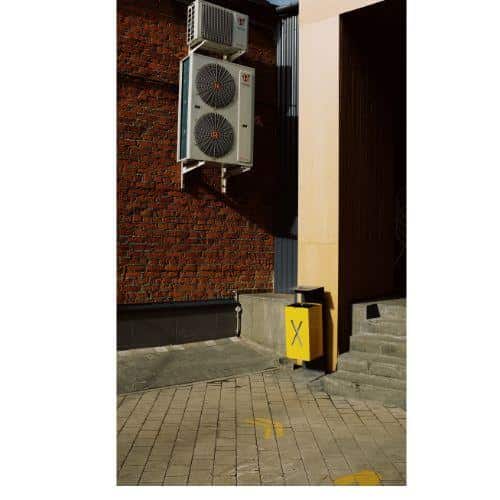
Hiring a professional team to clean your ductwork is a great way to ensure that you are getting the best results possible. The first step in the process is to inspect your entire HVAC system. We can safely and effectively clean your ducts, while also keeping the air quality inside your home high. This type of cleaning requires special training and a heavy-duty vacuum. It is also important to cover furniture while the cleaner works.
Our technical team can clean your HVAC ducts in your home by using special tools to loosen and remove contaminants that clog the pipes and ductwork. If needed, ducts may need to be cut to provide access and then resealed carefully. After the duct cleaning process is complete, the contaminated air is removed by powerful vacuum systems. This process is important, since improperly cleaned air ducts can cause more damage than good. This can be due to a number of different factors, including an ineffective air filter, improperly installed ductwork, or moisture buildup.
It’s important to have your HVAC system cleaned regularly to ensure that you have clean air inside your home. Indoor air quality is linked to several health problems. The EPA and NADCA both recommend air duct cleaning as a good idea. This cleaning can also improve the efficiency of your furnace.
It is important to have HVAC ductwork cleaning performed on a regular basis. Unless you’re planning to install a new HVAC system in the near future, you should clean your ducts at least once a year. According to the EPA, indoor air can be up to two to five times more polluted than outdoor air. As a result, these impurities recirculate throughout your house and can be harmful to your family. A licensed HVAC contractor can perform this task for you, and in some cases, it’s necessary to have the ducts cleaned urgently. For example, new homeowners should have their ducts cleaned prior to moving in. Smokers and pets also need to have their ducts cleaned.
Dirty ducts circulate contaminated air, which can lead to respiratory problems, allergies, and colds. Dirty air is also a breeding ground for dust mites, which feed on human debris and can trigger asthmatic reactions. Additionally, it’s easy for members of your family to become sick due to the lowered air quality in their home. For these reasons, HVAC ductwork cleaning should be done once every three to five years.

Once you have completed an apartment remodeling project, dust, sawdust, and other debris will end up in your ductwork. This means that you should get your ductwork cleaned out afterward. Having it cleaned can help prevent dander and other particles from spreading throughout your apartment. After all, your air filters can only capture so much of the air that comes into your apartment. Moreover, your ducts are rarely 100 percent intact and may have tiny holes and cracks. In addition, some construction debris is hazardous, including plastic and silica, which can cause long-term health problems.
When it comes to keeping your home comfortable, it is important to get your ductwork cleaned regularly. Having your furnace serviced regularly is an important step towards maintaining its efficiency, but you should also take the time to clean your ductwork as well. After all, the furnace and ductwork work together to keep you warm and comfortable. It is unnecessary and inappropriate to treat the two separately.
Winnetka, Northridge, Tarzana, Canoga Park, Encino, North Hills, Woodland Hills, Van Nuys, Panorama City, Granada Hills, Mission Hills, Chatsworth, Sherman Oaks, Topanga, Pacoima, San Fernando, Valley Village, Pacific Palisades, West Hills
